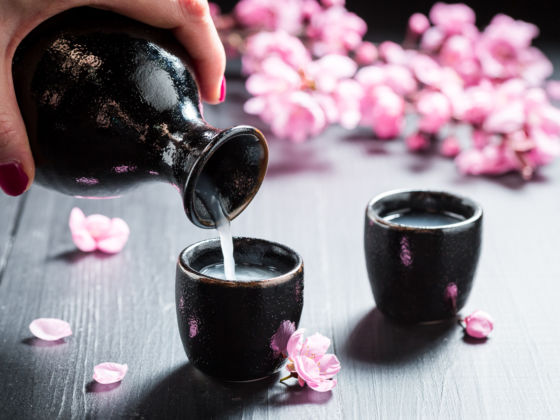FROM THE TRENDY COCKTAILS with liquid nitrogen that offer the risk of shattering your stomach to the purple corn drink used for energy in Peru, humans have put their national brand on how they approach booze. Japan is no exception, offering visitors and locals the opportunities to imbibe nihonshu (which outsiders think of as sake), beer, wine, and tea.


1. Cherry Blossom Season
Most tourists visit Japan during the height of the sakura season in April, when the trees are flowering and the slightest gust of wind can make it appear as though they are surrounded by a snowstorm of flower petals. Many Japanese and foreigners alike take this time to sit underneath the trees with a blanket or tent, and sip nihonshu while grilling their meal.
2. Karaoke
I believe that no one anywhere actually enjoys singing karaoke – they just appreciate the excuse to drink and yell without being shunned the next day. Karaoke bars are still immensely popular all across Japan, with most offering all-you-can-drink-and-eat specials within certain hours. After 4 or 5 Asahi Super Dry beers, you might be in the mood to belt out the lyrics to any Disney song.
3. On the street
In many parts of the world – Japan included – there are no open container laws, and you’re free to sip a beer on the subway, walk outside the bar with your wine, and stroll down the street draining a 1-Liter bottle of nihonshu. While drinking in public is relatively common, getting black-out drunk is less so outside of the red-light districts.
4. Tea house
Visitors don’t have to go to remote areas to appreciate good matcha with accompanying snacks – many smaller tea houses are available in parks and near some shrines. Just don’t ask for sugar with your green tea.
5. Convenience store “bar”
Somewhere between drinking in public and in the comfort of your own home, there lies an alternative for those who want to entertain but not have to clean up after themselves. All convenience stores in Japan, from the smallest kiosk at a train station to a megasized 7-11 in Osaka, sell at least beer and nihonshu, if not wine and imported spirits. Many even offer a small seating area for those on their lunch break needing to gulp down a bento box, but others can sit comfortably, crack open a Sapporo, and watch people pass by.
6. After a hot springs’ soak
If there’s one Japanese experience foreign tourists should indulge in, it’s spending a day or two outside the city in a traditional onsen ryokan (hot springs hotel). Etiquette is very strict on what goes on inside the bathing area – Russians have been banned from many hot springs in Hokkaido for drinking while soaking – but once you’re out of the pool and sweating, most neighborhood bathhouses and hot springs have a seating area (sometimes on tatami mats) for visitors to sip beers and cool down.
7. After a race, or any feat of strength
When I finished a parade dressed as a samurai on the island of Miyajima, I was surprised to be offered a cup of sake at 11:00 in the morning. Many athletic activities and feats of strength in Japan are often followed by “shots.” It’s not the same as when you finish a marathon in the US and then meet your friends at a bar to celebrate – in Japan, you’re allowed to drink pretty much the instant you cross the finish line.